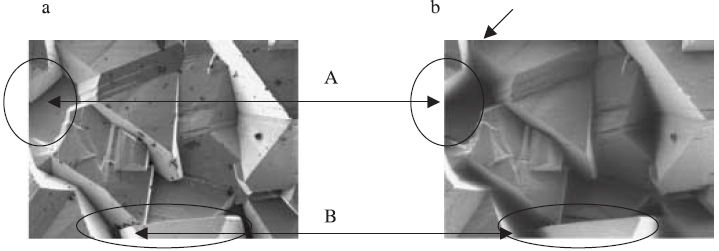|
|
Topographic Contrast (Sharpness) Affected by the Detector Position in SEM
- Practical Electron Microscopy and Database -
- An Online Book -
|
|
https://www.globalsino.com/EM/
|
|
This book (Practical Electron Microscopy and Database) is a reference for TEM and SEM students, operators, engineers, technicians, managers, and researchers. The sections and pages with a red star (*) or without stars are for basic studies, those with two red stars (**) are at medium level; and those with three red stars (***) are for advanced studies. If you are citing the contents in the book, for instance, please cite them in the format of “Practical Electron Microscopy and Database, Y. Liao, 2006, pp 4832” for https://www.globalsino.com/EM/page4832.html, or in the format of “Practical Electron Microscopy and Database, Y. Liao, (2006), https://www.globalsino.com/EM/page4832.html”.
|
=================================================================================
The position of the detectors in SEM systems also affects the image contrast. For specimens having a large topographic contrast, regions located in valleys or wells are more easily imaged using an in-lens detector than a lateral detector (e.g. Everhart-Thornley (ET) detector). Figure 4573 gives an example. The two images were taken at 1 keV with an in-lens detector (Figure 4573 (a)) and a ET detector (Figure 4573 (b)). The shadowing effects are more pronounced for lateral ET detector with respect to the in-lens detector as indicated by circle A. For small hills, the position of the ET detector introduced asymmetries in the imaging of equally inclined surfaces shown by circle B.

Figure 4573. Influence of detector position on SEM images. Left image: obtained by in-lens detector; Right image: obtained by lateral ET detector.
Adapted from [1].
[1] J. Cazaux, (2005) Recent developments and new strategies in scanning electron microscopy, Journal of Microscopy, 217, 16–35.
|
=================================================================================
The book editor and authors welcome your comments, suggestions, and papers, please click here for submission. Unless it is specified on the page, the author of the current page is Dr. Liao.
|
|
